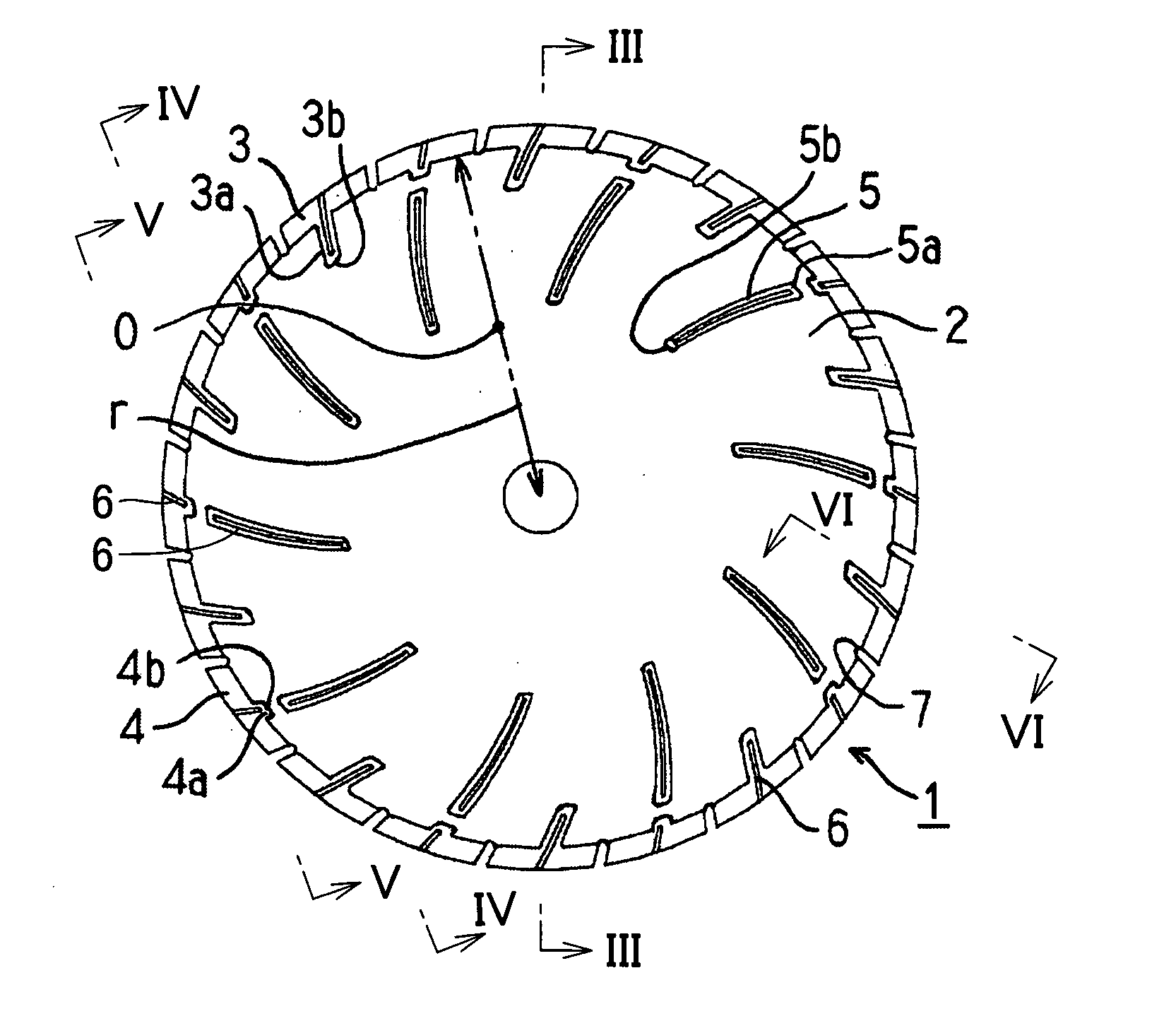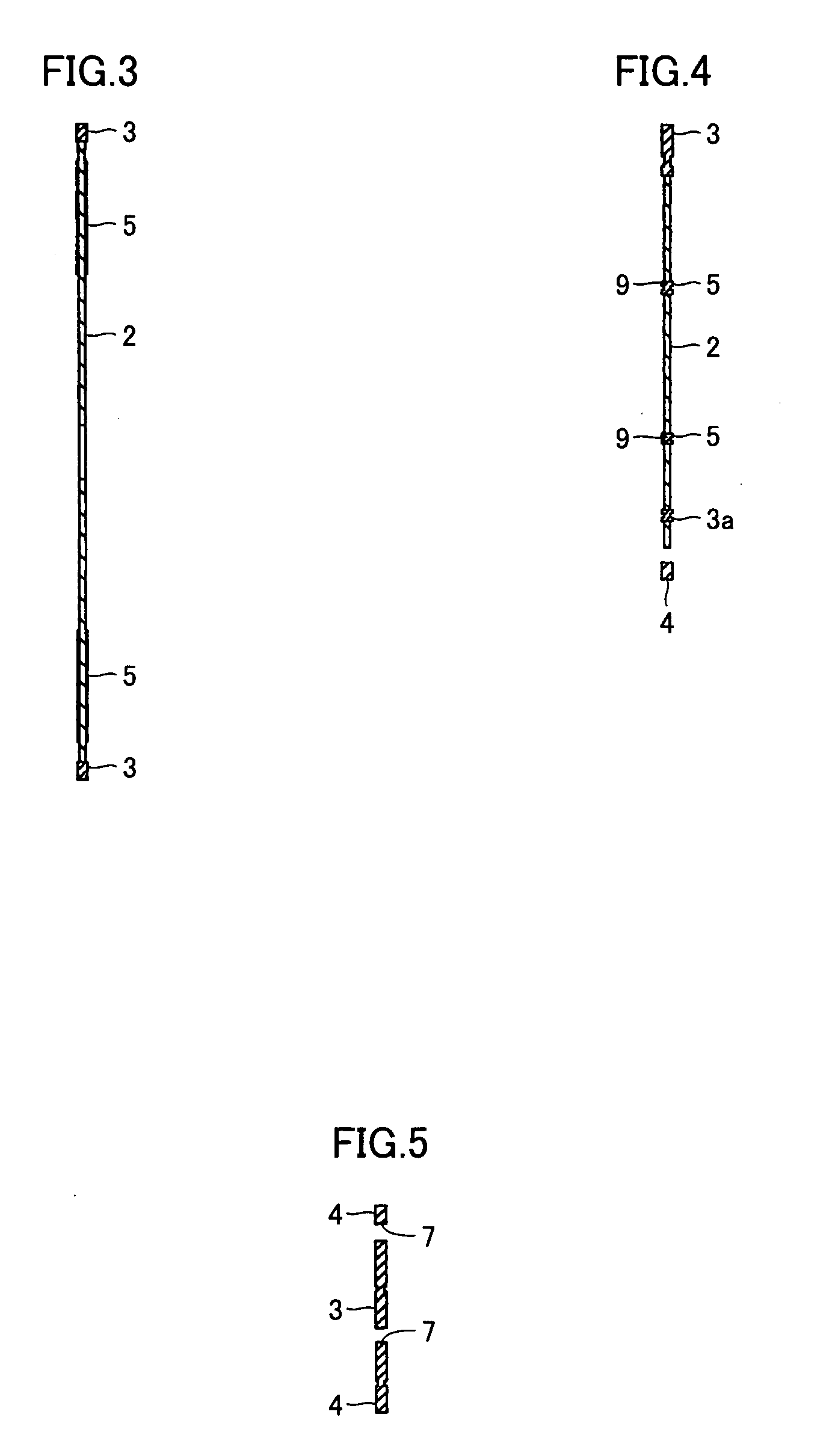Diamond blade
a diamond blade and diamond technology, applied in the field of diamond blades, can solve the problems of limited and not necessarily satisfactory prevention of wobbling, inability to perform tension adjustment of the core, and significant problems, and achieve the effect of preventing undercutting and small wobbling
- Summary
- Abstract
- Description
- Claims
- Application Information
AI Technical Summary
Benefits of technology
Problems solved by technology
Method used
Image
Examples
first embodiment
[0038]FIGS. 1 and 2 show a blade according to the present invention. Slots 7 are provided on the outer peripheral edge of a core 2, and first superabrasive layers 3 and second superabrasive layers 4 are alternately bonded to portions of the outer peripheral surface of the core located between the slots 7. The first superabrasive layers 3 are provided with extensions 3a partially extended toward the inner periphery of the core 2, while the second superabrasive layers 4 are provided with extensions 4a partially extended toward the inner periphery of the core 2. Further, reinforcing superabrasive layers 5 are provided on the inner peripheral sides of the extensions 4a of the second superabrasive layers 4. The extensions 4a of the second superabrasive layers 4 and the reinforcing superabrasive layers 5 are separate from each other. Portions of the core 2 are thus located between these superabrasive layers so that the core 2 itself is increased in strength to hardly wobble in cutting. In...
second embodiment
[0050] Referring to FIG. 9, a blade according to a second embodiment of the present invention is different from the blade according to the first embodiment in a point that no extensions are provided on second superabrasive layers 4. This blade also has effects similar to those of the blade according to the first embodiment.
third embodiment
[0051] Referring to FIG. 10, inner peripheral ends 4b of extensions 4a of second superabrasive layers 4 are located inward beyond a line connecting inner peripheral sides of adjacent slots 7 with each other in a diamond blade according to a third embodiment of the present invention. In other words, a relation expressed as h42 holds in FIG. 10. There is an apprehension that first superabrasive layers 3 and the second superabrasive layers 4 are subjected to resistance in cutting and tend to be bent in portions of the line connecting the inner peripheral sides of the slots 7 with each other, and this is prevented due to reinforcement with extensions 3a and the extensions 4a. While no provision of the extensions 4a on the inner peripheral sides of the second superabrasive layers 4 is also in the range of the present invention, the extensions 4a are preferably provided on the inner peripheral sides of the second superabrasive layers 4 in view of further reinforcement of the core 2 as des...
PUM
| Property | Measurement | Unit |
|---|---|---|
| diameter | aaaaa | aaaaa |
| height | aaaaa | aaaaa |
| compressive strength | aaaaa | aaaaa |
Abstract
Description
Claims
Application Information
 Login to View More
Login to View More - R&D
- Intellectual Property
- Life Sciences
- Materials
- Tech Scout
- Unparalleled Data Quality
- Higher Quality Content
- 60% Fewer Hallucinations
Browse by: Latest US Patents, China's latest patents, Technical Efficacy Thesaurus, Application Domain, Technology Topic, Popular Technical Reports.
© 2025 PatSnap. All rights reserved.Legal|Privacy policy|Modern Slavery Act Transparency Statement|Sitemap|About US| Contact US: help@patsnap.com



